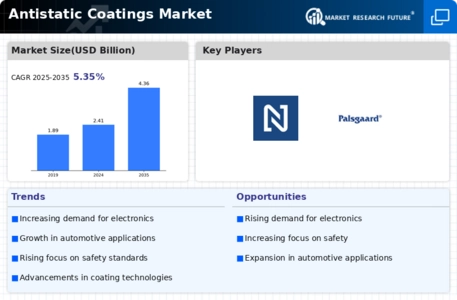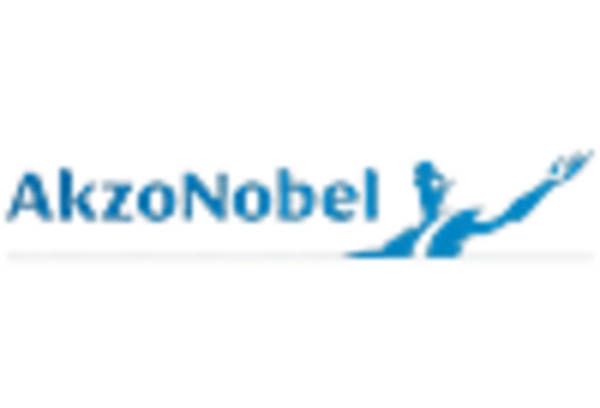Market Share
Antistatic Coatings Market Share Analysis
The Antistatic Coatings Market is undergoing strategic transformations as companies aim to establish a strong presence in the electronics, automotive, and industrial sectors. To gain a competitive edge, businesses are implementing various market positioning strategies that encompass technological innovation, diversification, and sustainability. Here are key strategies employed in the market share positioning of Antistatic Coatings: Advanced Formulations for Varied Substrates: Leading companies in the Antistatic Coatings Market prioritize innovation in coating formulations. This involves the development of advanced coatings with antistatic properties suitable for diverse substrates such as plastics, textiles, glass, and metals. Continuous research and development efforts contribute to the introduction of coatings that offer superior antistatic performance across a range of materials, positioning manufacturers as leaders in the field. Customization for Specific Applications: Customization is a key strategy, with companies tailoring antistatic coatings for specific applications and industries. Offering a range of formulations suitable for electronics, automotive interiors, packaging, and industrial equipment allows manufacturers to address a wide range of customer needs. Customization enhances the versatility of antistatic coatings and positions them as essential components in various sectors. Environmentally Friendly and Low VOC Formulations: With an increasing focus on sustainability, companies in the Antistatic Coatings Market are adopting eco-friendly practices. This includes the development of coatings with low volatile organic compound (VOC) content, reduced environmental impact, and adherence to green manufacturing standards. Positioning antistatic coatings as environmentally conscious aligns with global environmental goals and attracts environmentally conscious clients. Strategic Alliances with End-User Industries: Collaborative efforts with end-user industries such as electronics, automotive, and packaging form a strategic approach. Partnerships enable companies to work closely with industry stakeholders, providing tailored antistatic coating solutions, and ensuring compatibility with specific applications. Joint ventures and collaborations enhance the overall value proposition, making a company more attractive to industries seeking reliable and innovative antistatic solutions. Global Market Expansion: Companies aiming for increased market share strategically expand their global presence. This involves entering new markets, establishing partnerships with distributors, and adapting antistatic coatings to meet diverse international standards. A global footprint not only widens the customer base but also positions a company as a reliable supplier capable of meeting the diverse needs of an international clientele. Investment in Research and Development: A commitment to research and development is crucial for staying competitive in the Antistatic Coatings Market. Companies invest in R&D to explore new formulations, improve coating performance, and stay ahead of industry trends. Innovations stemming from R&D efforts contribute to positioning manufacturers as leaders in the development of cutting-edge antistatic coating solutions. Education and Training Programs: Providing education and training programs to manufacturers and end-users is a strategic approach. This includes training on the proper application techniques, best practices, and benefits of antistatic coatings. Educated professionals are more likely to choose and effectively use antistatic coatings, contributing to customer satisfaction and loyalty. Integration of Smart Technologies: Companies explore the integration of smart technologies into antistatic coatings. This includes incorporating features like real-time monitoring of static charges, predictive maintenance, and data analytics. Smart coatings contribute to a proactive approach in managing static-related issues, positioning manufacturers at the forefront of technological advancements in the antistatic coatings market. Certifications and Compliance: Adherence to industry standards, certifications, and compliance with regulations is a priority. Ensuring that antistatic coatings meet relevant standards for different industries builds trust with customers and regulatory authorities. Compliance becomes a key factor in market positioning and gaining the confidence of stakeholders. Emphasis on Long-Term Durability: Companies focus on the long-term durability of antistatic coatings, ensuring that they maintain their effectiveness over extended periods. Emphasizing durability contributes to the reliability of these coatings, positioning them as a sustainable solution for industries requiring consistent antistatic performance.

















Leave a Comment